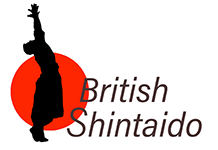Creation of Shintaido
The Shintaido system was created in Japan in the 1960’s under the leadership of Hiroyuki Aoki, who became a master of Shotokai karate in his twenties under Egami sensei – the founder of Shotokai karate. Egami sensei charged Aoki with the task of creating a new kind of martial art suitable for the modern age, which he began by forming the group Rakutenkai, meaning literally “a meeting of optimists”!
This group of approximately 30 people – including some of Japan’s top martial arts instructors and a variety of artists, musicians and actors – set out to create a new art form based on their own ideals and sense of optimism. The result of their labours is what we know today as Shintaido, a truly avant garde system of body movement.
Shintaido was conceived as a radical response to traditional martial arts, which the group saw as having lost their way: ceding traditional values of self-development to the lure of western-style competitions. The Rakutenkai group sought to create a new form of movement that would effectively embody the modern desire for peace, co-operation and mutual understanding among people of all cultures, rather than to cultivate the fighting arts as sport.
Influences
Within the present Shintaido curriculum there are clear influences from traditional martial arts such as kenjutsu (sword technique), bojutsu (quarterstaff) karate and judo. However, the creators of Shintaido were also influenced by contemporary and ancient arts such as classical music, jazz, tea ceremony, Noh theatre and abstract painting. Their aim was to synthesise individual expression with meditative practice, energy awareness and healthy exercise.
Modern Developments
Shintaido has changed and evolved since the early days, becoming more inclusive and slightly more gentle. Despite these changes the main emphasis of the movement is on developing a soft, open body, and on developing ideas of “giving and receiving” rather than “attack and defence”.
The modern curriculum is very broad, incorporating both open vigorous movements and soft or meditative movements, while encouraging joyful self-expression. In the UK beginners’ classes are run according to a structured programme, recognised by the European Shintaido College, and aim to give students a thorough grounding in the core movements.



